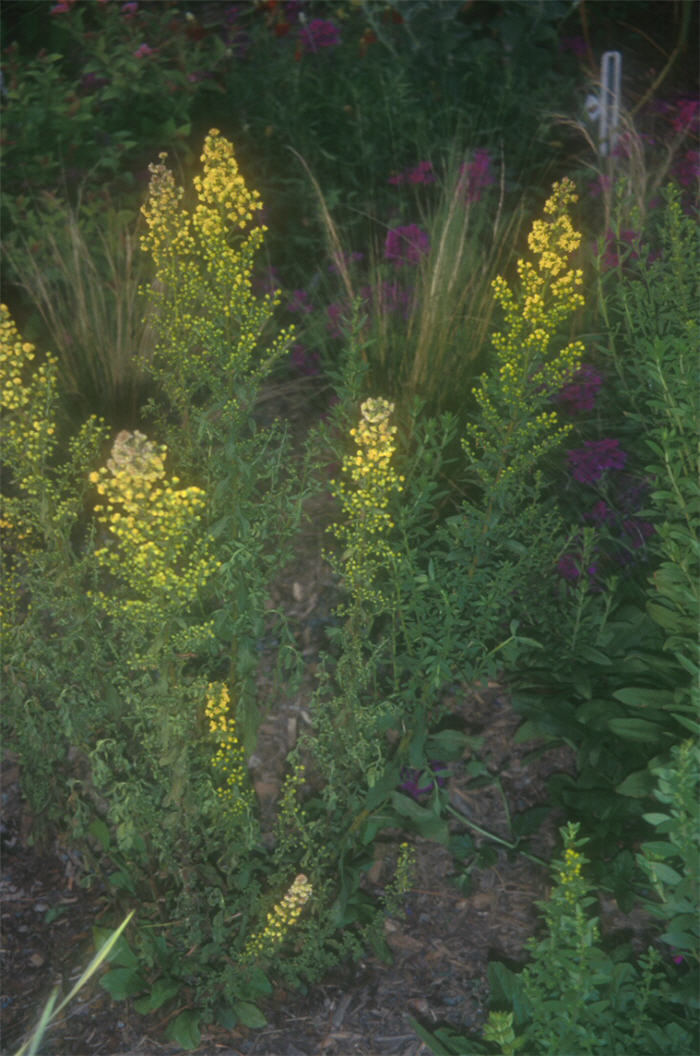| Botanical Name: Solidago roanensis | |
| Common Name: Roan Mountain Goldenrod |

-
Anatomy
-
Culture
-
Design
Plant Type
Perennial
Height Range
1-3'
Flower Color
Yellow
Flower Season
Summer, Fall
Leaf Color
Green
Bark Color
n/a
Fruit Color
n/a
Fruit Season
n/a
Sun
Full, Half
Water
Low, Medium
Growth Rate
Fast, Moderate
Soil Type
Clay, Loam
Soil Condition
Average, Rich, Poor, Well-drained, Dry
Soil pH
Neutral, Basic
Adverse Factors
n/a
Design Styles
English Cottage, Formal, Japanese, Meadow, Mediterranean, Ranch
Accenting Features
Fall Color, Showy Flowers
Seasonal Interest
Summer, Fall
Location Uses
Background, Perennial Border, Shrub Border, Foundation, Patio, Walls / Fences
Special Uses
Cut Flowers, Erosion Control, Mass Planting, Naturalizing, Small Spaces
Attracts Wildlife
Birds, Butterflies
Information by: Stephanie Duer
Photographer: Bobbie Schwartz
Photographer: Bobbie Schwartz
-
Description
-
Notes
Roan Mountain goldenrod is a native to open rocky clearings in the Appalachian mountains from Pennsylvania to Alabama. It makes a tight clump of vertical stalks to 30 inches tall, which open in early July as branched bottlebrush-like flowers of bright yellow. Foliage is green, ovate to lance-like, and basal. This goldenrod tends to be narrower than other species and so can be tucked into existing landscapes with ease.
Grow in average, dry to medium, well-drained soils in full sun to part shade. A woodland species that tolerates poor, dry soils and light shade, but performs best in full sun. Will grow in clay soils. Drought and deer resistant; attracts butterflies. Useful for erosion control. Has been wrongly accused of causing hay fever which is actually an allergic reaction caused by wind-borne pollen from other plants such as ragweed. Listed as being hardy to USDA Zone 6.